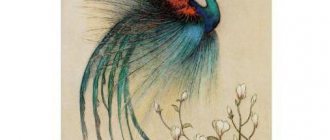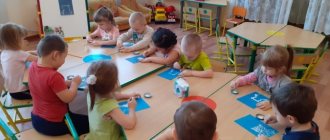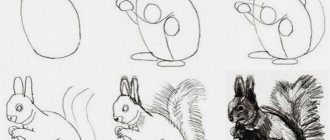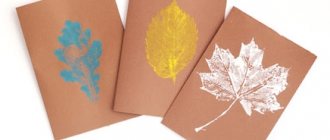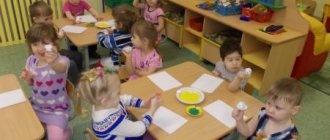How to draw using the Gzhel technique in the senior group?
Each professional master class of a Gzhel specialist involves at least several classes. We will also focus on this and learn step by step. I can suggest something like this:
- A story about Gzhel - a painting technique, a type of craft and art. Display visual materials to interest children. These can be pictures or objects, preferably funny and eye-catching. For example, like these piglets (by the way, they can really be used on the farm). Stroke practice on paper.
- Stencil painting (coloring), elaboration of the ornament, fixing the stroke. We learn to confidently draw a drop, a blade of grass, a curl, a spiral, a wavy line. The stencil can be on a regular sheet or cut out in the shape of a jug, teapot, or cup. It is better to use gouache.
- Painting of tableware. The ideal option is to draw a traditional Gzhel rose with variations. Children will both learn and learn the name. Acrylic paints will perform better. It is difficult to draw on a convex or concave workpiece, especially for the first time; you will need the help of an adult.
Variations are possible in any of the points. You can make the blank with your own hands - for example, mold flat medallions-“plates” with a diameter of about 8-10 cm from clay, dry it, paint it with white paint, apply a pattern with a pencil (blue felt-tip pen) and paint it. Here's a souvenir for March 8 or grandma's birthday! You can draw on plastic or other disposable utensils; such “blanks” are inexpensive and do not require labor to prepare.
Under Gzhel, you can paint templates in the form of eggs for Easter, postcards. Or you can buy white cups for painting, give them to children to paint, and then cover them with a special varnish and give them to families. Can you imagine what a memory this will be for years to come?
Program content: To introduce children to Gzhel porcelain, its characteristic features: the shape of the products, their purpose and patterned design in content, color, composition
To expand children’s knowledge about artistic crafts, to cultivate love and respect for folk traditions in art and its masters.
Progress of the lesson
An exhibition of Gzhel dishes is organized in the hall: samovars with teapots, a sugar bowl, an oil dish, a vase, a lion milkman, a cat sculpture
Book by N. Suryaninova “Blue Flowers of Gzhel”, postcards, illustrations. Badges for each child with a picture of a Gzhel rose on a circle.
Teacher's story:
— We came to an exhibition of dishes decorated with blue painting, they call it “Gzhel”. Based on the name of a small village near Moscow. Porcelain products are created in factories there. And these products are so good, people loved them so much that the fame of Gzhel masters spread not only throughout the country, but also far beyond its borders.
I like Gzhel primarily for its blue color. The Gzhel people themselves say that their sky is blue, blue. So they decided to transfer this blue to white porcelain.
Each artist comes up with his own vases, oil dishes, teapots, milk jugs, and sugar bowls. There are so many artists, so many different forms. And they are always unusual - cheerful, beautiful.
(They look at a samovar, a flower vase).
-Every thing made in Gzhel is interesting to look at and admire. Admire it too. Gzhel masters are great dreamers. Some cups are slender and tall, others look like a small barrel, and other figures are intricate. And everyone’s hands are different. When you see Gzhel teapots, your eyes widen. They are very good!
Look at this lion, he is not afraid of anyone, he is even a little funny, his mane is like a rose!
The artist’s hand moves a brush with paint along the white background of the cup, pressing it harder and weaker. And everything he draws becomes blue and blue - both flowers and grass. Just one paint, and what an elegant and festive painting it turns out to be!
The border is placed along the edges. (Suggests considering a samovar, sugar bowl).
-The most favorite pattern is the Gzhel rose. Sometimes it is depicted large, with broad strokes (shows on small and large teapots), and sometimes it is painted with a thin brush.
And it also happens: there is no rose itself, but only its petals (they examine).
The teacher invites the children to look at the products again, paying attention to the shapes and patterns. Gives children the opportunity to share their experiences.
Questions:
1.What elements of the pattern are used by Gzhel artists to decorate dishes.
2.What did you like most about the exhibition?
In memory of the exhibition, the teacher gives the children badges (circles with a diameter of 5 cm on which she drew different flowers).
On the topic: methodological developments, presentations and notes
A brief summary of the morning meeting for older preschoolers on the topic “Gzhel patterns.”
Educational objectives: Teach children to create patterns on a sheet of paper in the form of a folk product - a tray, using characteristic elements of Gzhel painting: flowers, leaves, dots, curls; Learn images.
Abstract of GCD in the preparatory group. Topic: “Painting a teapot with the Gzhel pattern” Goal: Continue to introduce Gzhel masters and their creativity. Teach children how to draw a Gzhel rose. Zach.
Introduce children to one of the types of folk arts and crafts - Gzhel painting. To develop the decorative creativity of children, to cultivate interest in the art of Gzhel masters, they will create.
What will you need for work?
- Paints are white and blue, shades of blue. For the first time, white and blue are enough. For painting you can use gouache, watercolor, acrylic.
- Brushes. Paint with flat synthetic brushes of different numbers. You can try No. 7, which gives a fairly large smear. Thin brushes are suitable for painting blades of grass and other elements.
- Stencils on which children will practice and perfect their strokes before painting dishes. They can be found on the Internet and printed, or taken from special publications. Wooden stencils work well - for example, this teapot. On the one hand, you can paint it according to the applied design, on the other, you can paint it yourself.
- Ceramic, clay, wooden or plastic tableware (plates, cups, saucers).
- Jars for water, simple oilcloth, paint removal wipes, clothing protection, etc.
Abstract of GCD in the preparatory group “Painting a teapot with the Gzhel pattern”
Elena Detkina
Abstract of GCD in the preparatory group “Painting a teapot with the Gzhel pattern”
Continue to introduce Gzhel masters and their work. Teach children how to draw a Gzhel rose . Strengthen the ability to compose shades of blue, paint with the end of the brush and the entire brush. Maintain interest in folk art.
Gzhel dishes , white and blue gouache, silhouettes of a teapot .
The land of a porcelain miracle, And all around it are forests...
It shines brightly from there, like the native heavens.
It is with this beautiful, gentle poem that I want to start the excursion to the museum. To the museum, where there are illustrations of dishes, and not ordinary dishes, but Gzhel ceramics .
Not far from Moscow, among forests and fields, stands the town of Gzhel . The craftsmen glorified their beloved land throughout the world with beautiful clay, painted with beautiful patterns with blue paint of different shades. They painted various patterns of nets , stripes, and flowers on the dishes. The painting turned out to be very intricate and elegant . People fell in love with the beautiful dishes and began to call them “pale blue miracles”
.
The group organized an exhibition of Gzhel dishes and products with Gzhel painting .
Children, together with the teacher, look at samples of Gzhel dishes .
- What makes the dishes like this? (White and blue painting )
— Guys, let's take a closer look at the painting .
— What color did the craftsmen use?
- What is written on the dishes?
-Where is the flower located?
—Are the petals on the flower painted in the same color?
— What patterns did the masters use?
(roses, circles, droplets, wavy lines, straight lines, thick thin lines, long short lines, tendrils, lattices)
— Guys, do you have such dishes at home?
And now I want to invite you to become Gzhel masters .
But first we will prepare for work and do a little warm-up.
The flower says to the flower:
Pick up your paper. (Children raise and lower their hands.)
Tap your foot. (Children walk in place, raising their knees high.)
Shake your head and greet the sun in the morning. (Rotate head.)
Tilt the stem slightly - Here is a charger for the flower. (Tilts.)
Now wash yourself with dew,
Shake yourself off and calm down. (Shaking hands.)
Finally everyone is ready
Celebrate the day in all its glory.
Let's all sit down at our tables. And we will paint the teapot . Look how I painted the teapot . What elements are used in painting the teapot ? And now I will show you in what order to draw these elements. Let's start drawing with a trefoil flower. First we draw a large petal in the center, then two small ones on the sides.
We will paint the petal pale blue, dilute the paint in the palette (there is very little water in the palette, because the paint should dry quickly). We paint the petal along the edge from left to right with continuous lines without gaps. We work with blue paint. Now let the flower dry, and with the end of the brush we will draw a branch, grass, curls along the upper and lower edges. You know this, and I won’t show it. Our flower has dried up and now we will decorate it. Decorate it with dark blue paint. We work with such paints like real masters. To do this, take the end of the brush with dark blue paint and draw a thin line along the edge of the flower.
Now we can get to work, just tell me, please, where we will start painting our teapot . And when we start decorating the flower with dark blue paint.
Children's independent work is performed to the sound of Russian folk instruments.
—Where did this utensil come to us from? (from the village of Gzhel near Moscow )
— What colors did you use? (blue, cyan)
— Did you like being craftsmen and painting dishes?
The teacher ends the lesson with the saying: “A craftsman and a craftsman brings joy to himself and others.”
.
And let your work bring joy too. Synopsis of the integrated lesson “Introduction to the Gzhel craft” Synopsis of the integrated lesson “Acquaintance with the Gzhel craft.” Goal: Introducing children to the origins of folk arts and crafts.. Abstract of the educational art program for drawing “Gorodets painting” in the preparatory group Good day, dear colleagues and guests of my site! Today I want to share with you a summary of the GCD for drawing in the preparatory class. Abstract of the GCD in the compensatory drawing group preparatory to school “Dymkovo painting. Young lady" Goal: To introduce children with mental retardation to folk culture and folk crafts. Objectives: 1. Correctional and educational. Strengthen children's knowledge about folklore.
On the topic: methodological developments, presentations and notes
Integrated lesson. The kids really enjoyed it. The lesson was accompanied by a slide show.
Integrated lesson on educational areas: Communicative and personal development; Cognitive and speech development; Artistic and aesthetic development. Develop skills in children.
Goal: To introduce children to the traditional Russian artistic craft “Gzhel ceramics.” To instill respect for the work of folk craftsmen. To give an idea of the artistic features of the Gzhel region.
Program objectives: to introduce children to the history of dishes and the process of their transformation by man; activate cognitive activity, arouse interest in objects of the man-made world. Bring up.
Lesson summary in the preparatory drawing group topic: “Fairytale Gzhel.”
Objectives of the lesson: To form an aesthetic attitude towards everyday objects and their artistic representation in still life. To consolidate children’s ideas about still life. To develop in children a sense of composition and color.
Program content: Educational: - introduce children to the painting of Polkhov - Maidan; - teach them to draw elements of Polkhov - Maidan painting - a branch with leaves and berries. Developing.
Lesson summary "Blue Gzhel" drawing lesson outline (preparatory group)
Educational field "Artistic and aesthetic development"
— Teach an element of Gzhel painting (a combination of an arched, looped line with strokes and dots).
— Teach children how to draw a Gzhel rose.
— Strengthen drawing skills with the end of the brush and the entire brush.
— Maintain interest in folk art.
Educational field "Cognitive development"
— continue to introduce children to folk arts and crafts.
Educational field "Speech development"
— develop communication skills;
- develop coherent speech, the ability to answer with complete answers; Educational field "Physical development"
— Form precise coordinated movements.
Educational field "Social and communicative development"
— to cultivate respect for folk craftsmen, the desire to continue the traditions of folk craftsmen.
- teach to see the beauty, originality and originality of products.
Equipment and materials: game “Assemble the dishes”, illustrations of products of Gzhel masters, blue and white gouache, brushes of different sizes, water, napkins, palettes, stencils of dishes.
Preliminary work: acquaintance with the Gzhel craft, examination of the album “Fairytale Gzhel”, dishes, toys.
